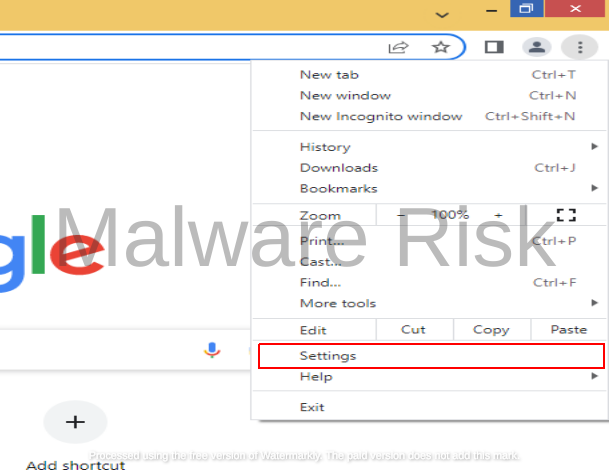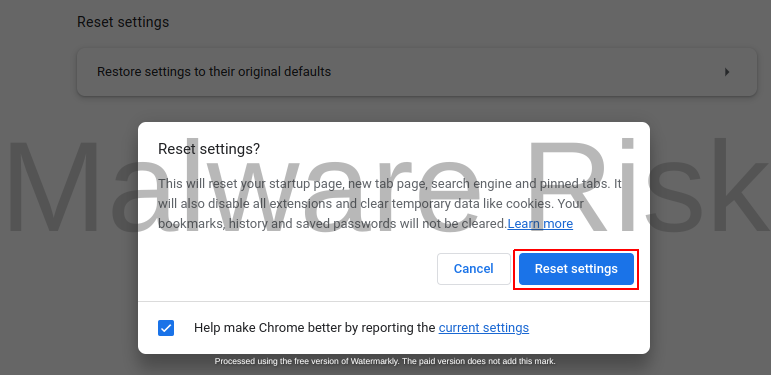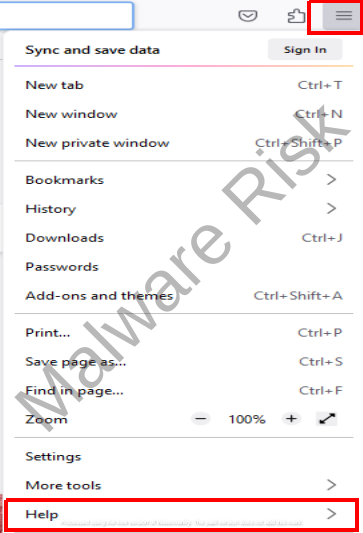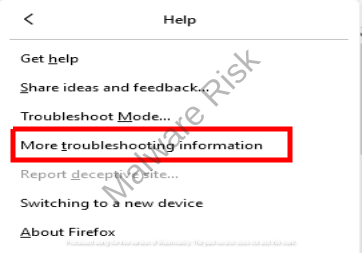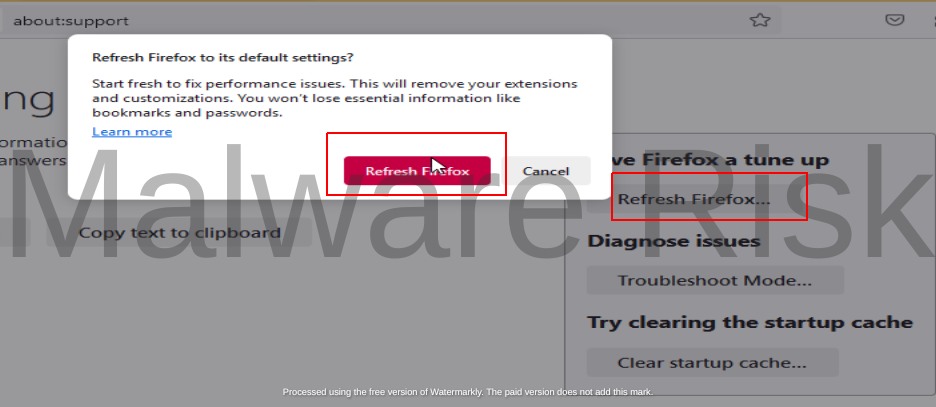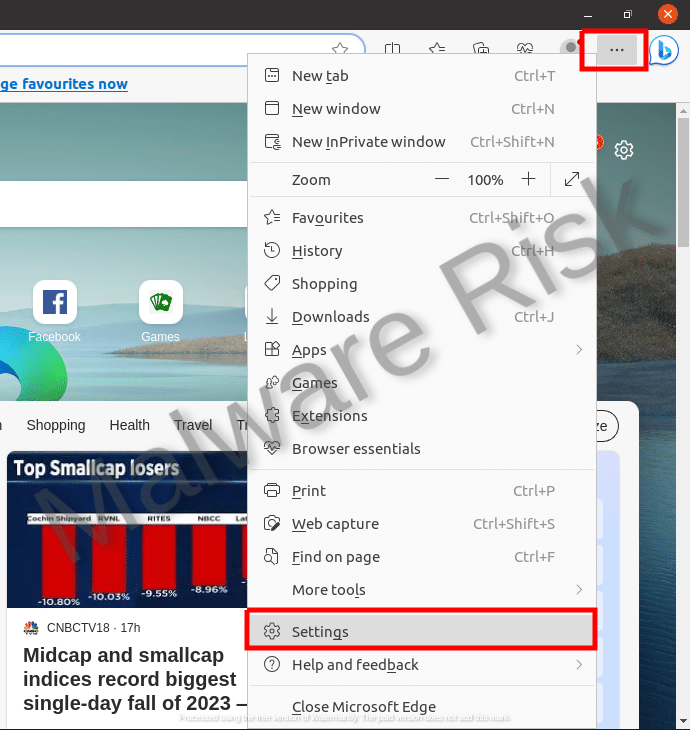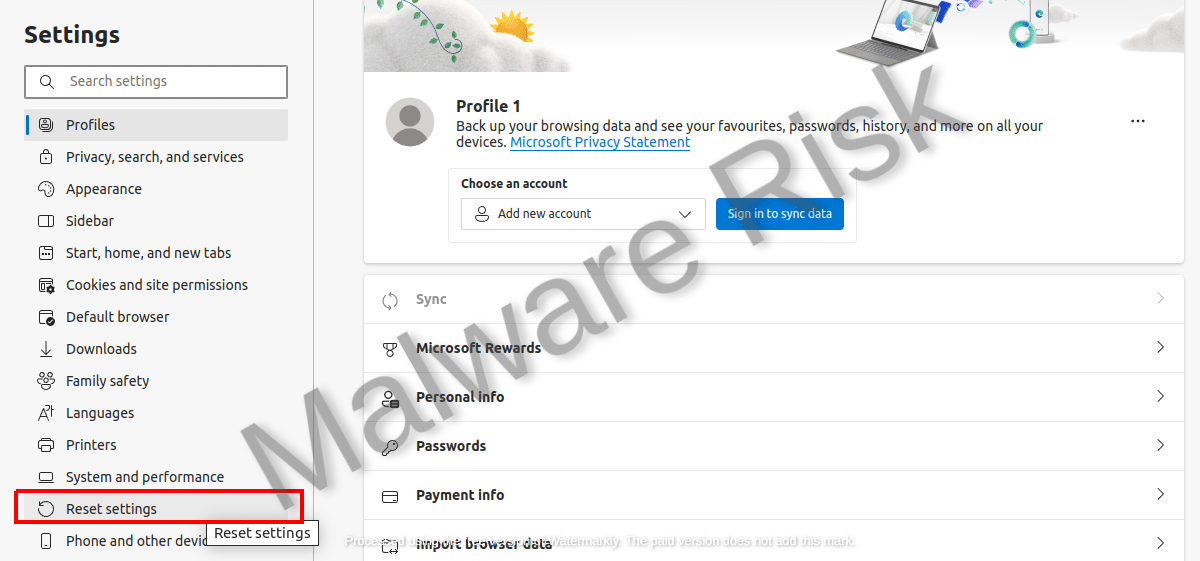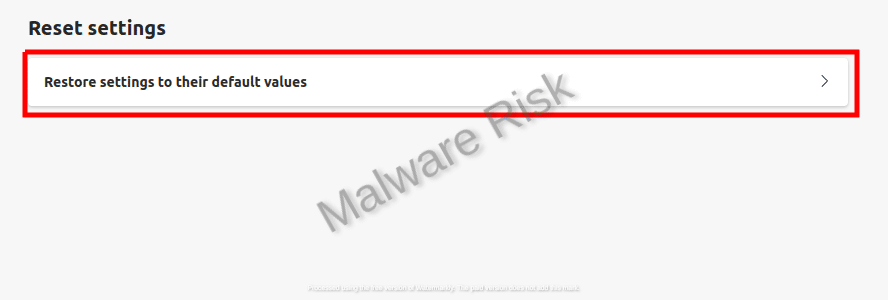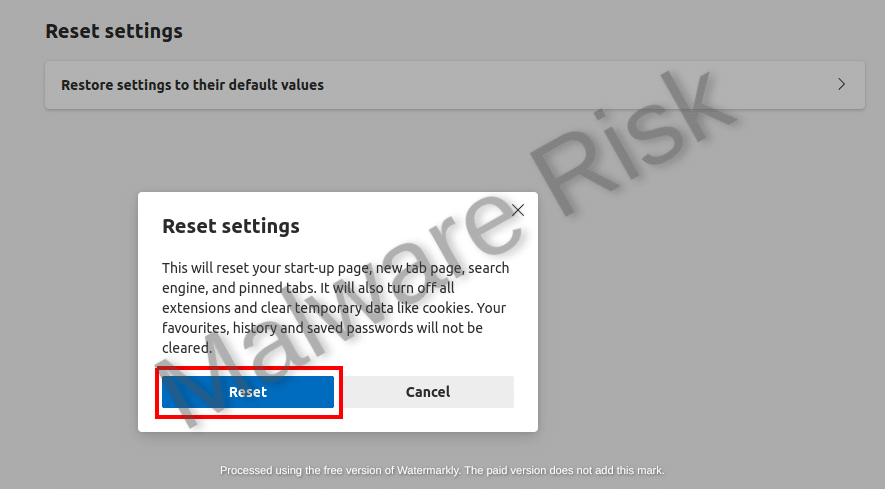The pervasive threat of virtual viruses and malware poses significant risks to our online safety, with the Emydreamsa.com redirect virus being a prime instance. This dangerous malware not only infects your computer but also disrupts its optimal functioning and compromises your data. Gaining an in-depth understanding of the virus, its symptoms, and effects can empower users to recognize and purge it promptly, maintaining their digital health.
Quick Links
This piece will serve as a comprehensive guide in identifying signs of an Emydreamsa.com infection, followed by steps on manual removal and helpful tips to prevent future attacks – necessitating a solid knowledge of computer systems. The article will also delve into the various anti-malware software available, their installation process, and usage to eliminate this troublesome virus.
Understanding Emydreamsa.com Redirect Virus
The Emydreamsa.com redirect virus is categorized as a browser hijacker or redirect virus. This type of malicious software is usually spread through free software downloads or infected websites. Upon infection, the malicious software alters your browser settings, redirecting your internet searches and home page to Emydreamsa.com or other unwanted websites. Other than being annoying, the alterations can slow down your computer’s performance significantly, consume more bandwidth, and affect your overall browsing experience.

The main risk with the Emydreamsa.com virus is privacy. The virus can keep a record of your online activity, including your browsing history, search queries, and even logins and passwords. The collected data can then be sent to remote servers where it can potentially be accessed by cybercriminals. These criminals might use the information for fraudulent activities, leading to identity theft or financial loss.
The Emydreamsa.com redirect virus primarily infects your computer through bundled software downloads purchased from not-so-reliable sources. Essentially, when you download and install a program, the virus is simultaneously installed without your knowledge. This method is known as “bundling.” Infections may also occur when you click on suspicious links, pop-up ads, or visit infected sites. Furthermore, the lack of a powerful security system in your computer increases the chances of such infections.
Given that the Emydreamsa.com redirect virus can seriously compromise your online privacy and security, prompt removal is critical. Leaving it unattended may cause continuous interference with your browsing activity, potentially leading to more severe malware infections. The virus may also make your computer more susceptible to cyber-attacks by exposing your system’s vulnerabilities, therefore increasing the risk for data or identity theft.
Threat Summary:-
| Threat Name: | Emydreamsa.com |
| Threat Description | It’s a recently discovered browser hijacker or a pop up virus meant to display frequent advert pop ups on screen and encourages users to interact with those. However, the interaction can be disrupting to users in all forms, so it’s better to stay away against those. |
| Threat Type: | Browser Hijacker, Adware, Pop-up Virus |
| Threat Symptoms | Modified settings in browsers, Frequent pop ups or redirect issues while browsing the web, Redirects to fake commercial or suspicious web addresses, etc |
| Threat Distribution | Free Downloads, Deceptive Advertisements, Fake Error Messages, and more. |
| Threat Removal | For efficient detection and removal of this threat, refer to instructions discussed under this guide. |
Spotting Signs of Emydreamsa.com Redirect Virus
Identifying Emydreamsa.com Virus Symptoms
You can suspect the presence of the Emydreamsa.com redirect virus from several common symptoms that indicate an infection. Firstly, observe your system’s performance. The redirect virus often significantly slows down the overall system performance. You might notice a delay when trying to open programs or files.

Effects on Your Browser
Beside affecting system performance, the Emydreamsa.com redirect virus can make unwanted changes to your browser settings as well. This questionable activity usually manifests as altered homepage or default search engine settings, where your usual pages are replaced with Emydreamsa.com or another unexpected site.
Sudden Redirection to Suspicious Sites
One of the most prominent signs that you’re dealing with a redirect virus infection is the constant redirection to suspicious or unfamiliar websites. While browsing, you may suddenly find yourself redirected to Emydreamsa.com or similar pages without any input from your side. This could happen even when you are not directly engaged with your browser, which could be highly inconvenient and disruptive.

Persistent Pop-up Ads
In addition, persistent pop-up ads are another hallmark of a Emydreamsa.com redirect virus infection. These pop-ups may appear frequently and unexpectedly. They often advertise various software, web services, or other products. Clicking on these pop-ups could further compromise your system by initiating more issues or even leading to malware infections.
Note: Being aware of these specific symptoms can allow you to promptly identify an Emydreamsa.com redirect virus infection and take necessary action to remove it.
Manual removal of Emydreamsa.com redirect virus
Uncovering Hidden Files
To begin, you’ll need to uncover hidden files as the virus might hide in these locations. Open the ‘Start Menu’ and type ‘Folder Options’ in the search bar and click on ‘File Explorer Options’. The ‘Folder Options’ window will appear, click on the ‘View’ tab. From there, look under ‘Advanced Settings’. Here, select ‘Show hidden files, folders, and drives’ and then hit ‘Apply’, followed by ‘OK’. This step will reveal any hidden files on your system.

Removing Suspicious Programs
After revealing hidden files, the next step is to remove any suspicious programs that might be related to the redirect virus. Go to ‘Control Panel’ from the ‘Start Menu’ and there, click on ‘Programs’ then ‘Programs and Features’. Go through the list of the installed programs and look for any suspicious or unknown applications. Right-click on them and choose ‘Uninstall’. Follow the prompts to complete the uninstallation.

Check and Reset Schedules Tasks
This redirect virus might set tasks to run at specific intervals automatically. So, it’s crucial to check for these and eliminate them. Go to the ‘Start Menu’, type ‘Task Scheduler’ and click on the result. In the Task Scheduler, look at all tasks and if there are any unknown or suspicious ones, right-click on them and choose ‘Delete’.

Cleaning Up Your Browser
The Emydreamsa.com redirect virus often affects your browser settings. Consequently, it is essential to reset your browser. Different browsers will have various methods for resetting them to default settings, so ensure to follow the one specific to your browser.
Step 1: Launch Google Chrome on your Windows computer.
Step 1: Launch Firefox on your Windows.
Step 1: Launch Edge and click on the three horizontal lines in top-right corner.
Resetting Safari on a Mac involves diverse steps like clearing the browsing history, emptying the cache, and removing extensions and cookies. Clearing Browsing History in Safari To clear your browsing history in Safari, click on "History" in the top menu, then select "Clear History." A dropdown menu will appear where you can select the length of history you want to clear - "the last hour," "today," "today and yesterday," or "all history." Choose the option that suits your requirement and click "Clear History."
Emptying Safari’s Cache The cache is a place where Safari stores website data to speed up the loading process. Over time, the cache can become bloated and may slow down Safari. To clear it, click on the "Safari" in the top menu, then select "Preferences." From there, go to the "Advanced" tab and select "Show Develop menu in menu bar." Close the "Preferences" window, and in the top menu, you'll find a new "Develop" option. Clicking on it will give you the option to "Empty Caches."
Removing Cookies in Safari Removing cookies can be done through the "Preferences" menu in Safari. Click on "Safari" then "Preferences," then go to the "Privacy" tab. You can either "Manage Website Data" to remove cookies from specific sites, or click "Remove All Website Data" to remove all cookies.
Removing Extensions in Safari Extensions are small software programs that can modify and enhance the functionality of the Safari browser. But sometimes, they might cause issues. To remove them, click on "Safari" in the top menu, then "Preferences". Go to the "Extensions" tab, where you'll see the list of installed extensions. Select the extensions you want to remove and click on the "Uninstall" button.
Access Internet Explorer SettingsClick on Internet Explorer to open the application on your computer. After opening Internet Explorer, locate the "Tools" icon. This icon typically looks like a small gear in the upper-right corner of the Internet Explorer window. Once you've clicked on this, a dropdown menu will appear. From this menu, select "Internet Options."
Understand the Implications of ResettingBefore resetting, understand what it means to reset Internet Explorer to factory defaults. By doing so, you're erasing any personal settings, extensions, or cookies you've set up since you've installed the software. This includes deleting your browsing history, disabling toolbars and add-ons, and resetting all custom settings to default. If you have any important bookmarks or saved passwords, make sure to back them up first. Navigate to the Reset OptionIn the "Internet Options" window, click on the "Advanced" tab. At the bottom of this tab, you should see a "Reset..." button. Click on this to open up the "Reset Internet Explorer Settings" window.
Execute the ResetAfter the "Reset Internet Explorer Settings" window opens, you'll see a box that you can check to "Delete personal settings." If you want to erase all personal data saved in Internet Explorer, including saved passwords, form data, and browsing history, check this box. If you'd rather keep your personal data and only reset the browser settings to default, leave this box unchecked. Once you've decided what you want to do, click the "Reset" button at the bottom. A confirmation window will appear to assure you that the reset was successful.
Verify the Successful ResetAfter you click "Reset", Internet Explorer will apply the changes and ask you to restart the software. Close Internet Explorer and open it again. The changes have now taken effect and your software has been reset to factory settings. To confirm the reset, navigate back to the "Tools" menu, select "Internet Options", and click on the "Advanced" tab. At the bottom of this window, you should see that your personal settings have either been erased or reset, depending on your previous selection. If executed correctly, Internet Explorer should now operate just as it did when you originally installed it. Resetting Opera on Windows
Resetting Opera on Mac
|
Refreshing Your Hosts file
Refreshing your Hosts file is beneficial because it prevents the virus from redirecting your searches. To access this, go to ‘C: > Windows > System32 > drivers > etc > hosts’. If the Emydreamsa.com virus has affected your systems, there will be a lot of IPs underneath ‘Localhost’. To rectify this, you can replace the affected hosts file with a new one.

Tip To Remember: It may take several steps, from revealing hidden files, uninstalling suspicious programs, to resetting your browser settings, to completely eliminate the Emydreamsa.com redirect virus’s traces. Be patient and follow each step carefully. With a decent understanding of computer systems, you can rid your system of this bothersome virus.
Installing and Using Anti-Malware Programs
To remove elusive virus such as the Emydreamsa.com redirect virus, you’ll need a reliable anti-malware or anti-virus software. There are several effective options available in the market including Norton 360, Spyhunter, Combo Cleaner and Malwarebytes. These programs are updated frequently to deal with the newest threats and provide robust security features. They come with both free and paid versions. However, paid versions often provide more comprehensive protection.
Installing Anti-Malware/Anti-virus Software
While the process may be different depending on the software you select, the general process is as follows:
- Visit the software’s official website and locate the download page.
- Choose the version you wish to install, either free or premium.
- Click the download button.
- After downloading, locate the executables file in your downloads folder or wherever you specified the download to go.
- Open the executable file and follow the instructions on the installation wizard to install the software on your system.
Scan and Remove Emydreamsa.com Redirect Virus
After installation, you can scan for and remove the Emydreamsa.com redirect virus with your new software. Here are some general steps:
Threat Removal With Malwarebytes Malwarebytes is a leading provider of antimalware software, dedicated to protecting users from the ever-growing threat of malware. With its advanced technology and comprehensive approach, Malwarebytes offers a robust solution to detect, prevent, and remove malicious software from computers and devices. Malwarebytes' antimalware software combines multiple layers of protection, including real-time scanning, behavior monitoring, and artificial intelligence, to identify and eliminate threats in real-time. This proactive approach ensures that users are protected from both known and emerging threats. It’s available as a free tool and we recommend it as a must have app on your device to keep your protected against threats. Step 1: Download Malwarebytes for your device by clicking on the link based on your operating system. Malwarebytes is available free of cost and can be used over cross platforms. However, the premium version offers more versatile features and protection to your device. You can register the app to premium version through in-app options or official website. Download Malwarebytes For Windows/Mac Step 2: Navigate to the folder where the installer file is downloaded and double click on it. The file is usually stored under “Downloads” directory.
Step 3: Once the installer runs, it opens Malwarebytes Setup Wizard with two options as Install and Advanced options. The Advanced option basically allows you to choose a directory where you want the app to install, select your language, and adding shortcuts. Just click on Install.
Step 4: You will now be asked to choose the type of protection you want, either Personal or Business. Based on your requirements, select the right option and click Next button.
Step 5: The setup will ask you to add a browser guard to keep your browsing safe. It’s an optional thing, but still you can choose adding the plugin to browsers to keep your online data safe. Once selected the appropriate option, proceed further to install the app. The installation process may end in a few minutes.
Step 6: After the installation is successfully done you can see a success notice. Click on Open Malwarebytes button now.
Step 7: After the Malwarebytes launches, click on the Scan button to start the scanner to identify present threats on your device.
Step 8: Sit back, wait and relax till the scanner searches for malicious traits on your computer. It may take time depending upon the storage size, and computer resources as well.
Step 9: After the scanning process completes, a screen with detected threats will appear before you. To remove detected malware or potentially unwanted programs from your device, click on Quarantine button.
Step 10: Malwarebytes may also ask you to restart your computer to complete threat removal process. So, just restart your computer. That’s it, your computer is now malware free. Threat Removal With Spyhunter SpyHunter is a powerful antimalware software designed to protect your computer from various threats, including malware, spyware, and adware. With its advanced scanning technology, SpyHunter can detect and remove harmful programs that may be lurking in your system. It also offers real-time protection to prevent new infections from occurring. SpyHunter is known for its user-friendly interface, making it easy for both novice and experienced users to navigate. It provides regular updates to ensure that your computer remains secure against the latest threats. If you're looking for a reliable antimalware solution, SpyHunter is definitely worth considering. Step 1: Download Spyhunter 5 for your device by clicking on the link based on your operating system. SpyHunter 5 Anti-Malware provides a 7-day fully functional Free Trial (15 days for Mac) with Credit card required, No charge will apply upfront. No charge if you cancel 2 business days before the trial ends. Download Spyhunter For Windows Download Spyhunter For Mac Step 2: Go to the directory where the installer is downloaded and stored. The file is usually stored under “Downloads” directory. Double click on the installer to run setup.
Step 3: Select your preferred language and click on OK button. This will initialize the installer, so click on the Continue button when prompted.
Step 4: You will be asked to accept the EULA and Privacy policy of the application to proceed the installation. So choose the option I accept the EULA and Privacy Policy, and click on Accept & Install Button.
Step 5: Now, the installation process will begin and progress bar can be seen. The process may take a while to complete, after which a successful installation notice is shown.
Step 6: The Spyhunter launches itself automatically following installation. Below mentioned screen will appear before you.
Step 7: Also, the scanner will start scanning your computer to identify present threats inside your device. During scan, it will show you detected threat’s name, security level, and details about the threat as well. Sit back & relax to complete the scan process
Step 8: The scanner once finished, click on Next button to proceed further.
Step 9: The app will ask you to buy its licensed version to complete the removal process. Alternatively, you can also avail a 7 day free trial under which the software will be fully functional to remove all threats.
Threat Removal With Combo Cleaner Combo Cleaner is a comprehensive security software designed to protect and optimize your Mac system. With its powerful features and user-friendly interface, Combo Cleaner offers a range of tools to keep your device safe from malware, adware, viruses, and other threats. It scans your computer thoroughly, detects and removes any malicious software it finds, and also cleans up junk files and unnecessary clutter to improve system performance. Combo Cleaner is known for its advanced algorithms and real-time protection, ensuring that your Mac remains secure and optimized at all times. Whether you are a casual user or a professional, Combo Cleaner provides a reliable solution to ensure the safety and efficiency of your Mac. Step 1: Click download button below to get Combo Cleaner for Windows/Mac on your device. Combo Cleaner Antivirus is available to download as free scanner. The scanner will scan and detect all inside threats on device, but users need to buy its license key to avail complete removal of threats. Download ComboCleaner For Windows Download ComboCleaner For Mac Step 2: Browse to the directory where the installer is downloaded (usually in ‘Downloads’ folder), and double click on the installer to start installation.
Step 3: The installer begins and will ask you to set some necessary parameters like creating shortcuts, starting the app on windows startup and more. Choose the right options based on your needs, and click Next button.
Step 4: The installer now starts to install Combo Cleaner on your device and will complete it in just a few minutes.
Step 5: Once the installation completes, click on Finish button. Do make sure the option “Launch Combo Cleaner and run initial computer scan” is checked.
Step 6: The initial computer scan will start with updating and installing Combo Cleaner antimalware database updates. It will take some time depending upon your internet speed, and other resources.
Step 7: After the database updates are successfully installed, the antimalware solution will start scanning your device for present malware threats. Sit back and relax to let the app complete its process.
Step 8: After the scanning completes, a screen appears with all detected threats on your device. Just click on Remove All Threats button. Threat Removal With Norton Antivirus Norton 360 is a comprehensive antivirus software that offers robust protection against various online threats. With its advanced features and real-time scanning capabilities, it ensures the safety of your devices and personal information. This antivirus software not only detects and removes viruses, malware, and spyware but also provides a firewall to protect your network from unauthorized access. Norton 360 is compatible with multiple platforms, including Windows, Mac, and mobile devices, providing a seamless experience across all your devices. Its user-friendly interface allows you to easily navigate through its various features and customize your security settings according to your preferences. Stay protected with Norton 360 and enjoy a worry-free online experience. Step 1: Click on the button below to get Norton 360 protection for your device. Norton 360 Antivirus is available and accessible over cross platforms. It provides a 7 day fully functional free trial with Credit Card. No charge deduction till trial period. Download Norton 360 For Windows/Mac Step 2: Download the installer and run it on your device. Click on Install button to proceed with installation steps further.
Step 3: The installation process will begin now with an increasing progress bar. Wait for the installation to complete.
Step 4: After the installation process completes, launch Norton 360 and click on Quick Scan option to start scanning device for threats.
Step 5: The scanner will initialize scanning computer for threats. This process may take some time depending upon the disk size and hardware resources of device.
Step 6: Once the scanner finishes, it will take all appropriate action against detected threats automatically. Click on Finish button to close the app.
Step 7: If you have purchased Norton’s license key, we suggest you to activate the application by clicking on Activate Now option.
Step 8: Norton 360 will now connect with its server to complete activation.
Step 9: Congratulations, your device is now protected with Norton 360 against all threats. |
Note: In general, these steps should guarantee the removal of the virus. However, remember to keep your anti-virus software updated regularly and run scans periodically. It is also advisable to avoid clicking on suspicious links, as this is often how redirect viruses are often installed.
Prevention Tips Against Future Infections
Understanding Safe Browsing Practices
Safe browsing involves adopting online habits that help protect your personal data while surfing the internet. It begins with understanding what constitutes potentially harmful websites or URLs. One of the key practices of safe browsing is to avoid visiting unsecured or unfamiliar websites with dubious reputation. Make it a habit to check the URL of a site before you click on it. If it looks suspicious or unfamiliar, it’s best not to click on it at all.

For sites that require personal information, check to see if the site’s URL begins with “https” and not just “http”. The ‘s’ means secure, meaning any data you enter on the site is encrypted and more difficult for hackers to access. Websites without this could potentially put your data at risk. It’s also recommended to avoid downloading content from these sites as they may contain harmful malware or viruses.

Cookies are another area to consider while browsing. While cookies can make subsequent visits to sites more convenient, they also serve as a tool for tracking your online behavior. For privacy purposes, users should regularly delete cookies from their browsers or use private browsing modes. Avoid clicking on pop-up ads or messages as these can often lead to harmful sites or trigger downloads of malicious software. In general, steer clear of any webpage elements that seem intrusive or fishy.
Regularly Updating Antivirus Software
Antivirus software is a crucial tool in protecting your computer against malicious software like viruses or malware. However, the effectiveness of your antivirus software heavily depends on how regularly you update it. New viruses are created every day, and your antivirus software uses updates to keep its database current and more effective at detecting and removing these new threats.

Make sure to set your antivirus software to automatically update. If this isn’t possible, schedule a regular reminder to check for and install any available updates manually. When updating antivirus software, only do so from the software’s official website or app. This will prevent accidentally downloading fake software updates that might be harmful to your system.
Avoiding Suspicious Websites or Links
Avoiding suspicious websites or links is a proactive way to keep your system secure. Phishing scams, in particular, often use fraudulent websites or email links to trick users into revealing sensitive information.
Always be skeptical of unsolicited emails, particularly those that request personal information or prompt you to click on a link. Even if the email appears to come from a known contact or organization, if it looks suspicious, it’s best to avoid it.

Use a search engine to verify any promotions or offers received via email or social media. If the deal or news is real and significant, it should be readily visible in a basic web search. Finally, remember to never disclose personal or financial information via email or on a website unless you can verify its security and authenticity.
Note: By understanding safe browsing practices, regularly updating antivirus software, and avoiding suspicious websites or links, users can help bolster their system’s protection against threats like the Emydreamsa.com redirect virus. By being proactive, you can help ensure your digital surfing remains as safe and secure as possible.
Final Thoughts
As the Emydreamsa.com redirect virus continues to pose a serious threat to online safety, a well-rounded understanding of its structure, impact, and effective mitigation methods becomes immensely crucial. By manually removing the virus, and utilizing advanced anti-malware software and programs, you can fortify your digital boundaries against it.
Moreover, developing an awareness of safe browsing practices and regular software updates can significantly minimize the chances of future infections. As you venture into the digital world, stay vigilant and proactive in order to combat any nefarious threats that could jeopardize your online security.
Frequently Asked Questions about Virus/Malware
A computer virus is a type of malware that spreads between computers and damages data and software. It is a program that infects files or system areas and makes copies of itself. Some viruses are harmless, while others can damage or destroy files. Unlike worms, viruses require user action to spread. They used to be spread through portable media, but now they are primarily spread through email messages. To avoid virus infections, it is important to not open unknown email attachments and to view email messages in plain text.
Viruses spread by infecting files or the system areas of a computer's hard drive and making copies of themselves. They can infect other programs on the same computer or on other computers connected over a network. In the past, viruses were primarily spread through portable media such as floppy disks, but now they are mainly spread through email messages. When you open an attachment or click a link in an email message, most viruses are activated. It is important to be cautious of email attachments and links, limit HTML in email messages, and view them in plain text to avoid virus infections.
A worm is a type of malware or malicious software that can rapidly replicate and spread across devices within a network. Unlike a virus, a worm can self-replicate and spread automatically without the need for human intervention. Worms can infect computers through software vulnerabilities, spam email or instant message attachments, or removable drives. Once a worm infects a device, it continues to spread to other systems, causing disruptions and potential data loss. Mitigating a worm attack involves containment, inoculation, quarantine, and treatment. It is crucial for businesses to have a coordinated response plan in place to effectively respond to worm attacks.
A Trojan Horse, or Trojan, is a type of malware that disguises itself as legitimate software or code. Unlike viruses or worms, Trojans require deliberate action from the user to infect a device. Once installed, Trojans can perform various actions, such as modifying data, stealing sensitive information, exploiting vulnerabilities, installing malicious programs, extorting users, setting up backdoor access, or carrying out DDoS attacks. There are different types of Trojans, including exploit Trojans, downloader Trojans, ransom Trojans, backdoor Trojans, fake AV Trojans, rootkit Trojans, SMS Trojans, banking Trojans, and Trojan GameThief. Some recent examples of Trojan attacks include Zloader, QakBot, and Andromeda.
Adware and browser hijackers are similar in some ways but have distinct differences. Adware is a type of software that displays unwanted advertisements on a user's device. It is often bundled with freeware or shareware and can track user behavior and collect personal information. On the other hand, browser hijackers are a specific type of malware that modifies browser settings without the user's consent, redirecting them to malicious websites. While adware may be a component of browser hijackers, not all adware is classified as browser hijackers. Both adware and browser hijackers can negatively impact user experience and compromise privacy and security. It is essential to have proper security measures in place to protect against both adware and browser hijackers.
Ransomware is a type of malware that encrypts a victim's data and holds it hostage until a ransom is paid. It prevents users from accessing their systems or files by either locking the screen or encrypting the files themselves. Ransomware can spread across networks and paralyze entire organizations. It uses asymmetric encryption, which makes it extremely difficult to decrypt files without the private key. Ransomware is often distributed through email spam campaigns or targeted attacks. It has been on the rise since the WannaCry outbreak in 2017 and has become more sophisticated, incorporating techniques like data theft and double extortion to pressure victims into paying the ransom.
To protect your computer from viruses, you can follow these steps:
- Install antivirus software: Use reputable antivirus software and keep it updated to detect and remove viruses.
- Keep software up to date: Regularly update your operating system and software to patch any security vulnerabilities.
- Backup your computer: Regularly backup your important files to an external storage device or cloud storage to protect against data loss from viruses.
- Use strong passwords: Create strong, unique passwords for your accounts to prevent unauthorized access.
- Be cautious of downloads: Avoid downloading files from untrusted sources and be cautious of email attachments, as they can contain viruses.
- Install an ad-blocker: Ad-blocking software can help prevent malicious ads that may contain viruses.
- Run virus scans regularly: Schedule regular virus scans on your computer to detect and remove any malware.
- Avoid suspicious links: Be cautious when clicking on links, especially in email messages, as they can lead to malicious websites. Hover over links to verify their legitimacy before clicking.
By following these steps and exercising caution while browsing, you can minimize the risk of viruses infecting your computer.
The signs of a malware infection include slow performance, unexpected freezing or crashing, diminished storage space, changes to your browser homepage, browser redirects, new browser toolbars, annoying pop-ups, unusual error messages, fake virus alerts, excessive ads, system crashes, loss of disk space, increased internet activity, changes in browser settings, disabled antivirus software, and loss of access to files. These symptoms indicate that your device may be infected with malware and should be diagnosed and treated promptly.
To avoid falling for tech support scams related to malware, you can follow these tips:
- Be cautious of unsolicited phone calls claiming to be tech support. Legitimate companies usually don't reach out to customers in this manner.
- Never call the phone number in a pop-up message on your computer. These pop-ups can be fake and are often used as a tactic by scammers.
- Update or download legitimate security software and regularly scan your computer for malware. Delete anything the software identifies as a problem. If you need assistance, seek help from trusted sources.
- Be skeptical of anyone claiming to be a tech support staffer from a reputable company like Microsoft. Don't provide personal information or grant remote access to your computer unless you've verified their identity.
- Educate yourself about common scam techniques and stay informed about the latest threats. This will help you recognize red flags and avoid falling for scams.
If your device is infected with malware, there are several steps you can take to address the issue:
- Confirm the infection: Look for unusual behavior on your device, such as slow performance, frequent crashes, or excessive pop-up ads. This will help you determine if your device is indeed infected with malware.
- Disconnect from the internet: Unplug your device from the network to prevent the malware from spreading or communicating with its command and control servers.
- Run anti-malware software: Use reputable anti-malware software to scan your device and remove the malware. Make sure the software is up to date and perform a thorough scan of your system.
- Back up critical files: Before taking any further action, back up your important files and data to ensure they are not lost during the malware removal process.
- Reinstall the operating system if necessary: If the malware has deeply infected your device and cannot be completely removed, consider reinstalling the operating system. This will wipe out all the existing data and software on your device, so make sure you have backups of your important files.
- Consider data recovery services: If you have lost any data due to the malware infection or the subsequent removal process, you may want to consult professional data recovery services to retrieve your lost files.
Remember to keep your device's software up to date, use strong passwords, and be cautious of suspicious links and downloads to prevent future malware infections.

Nishant Verma is a senior web developer who love to share his knowledge about Linux, SysAdmin, and more other web handlers. Currently, he loves to write as content contributor for ServoNode and also collaborated with MRLabs now.


